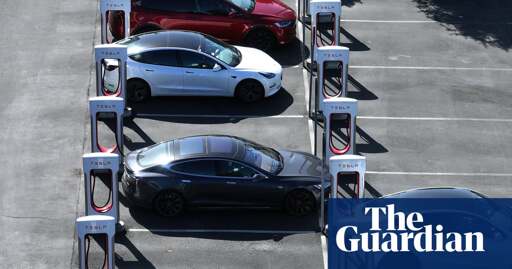Summary
The Trump administration has suspended the $5 billion National Electric Vehicle Infrastructure (NEVI) program, halting state funding for EV charging stations.
The Federal Highway Administration ordered states to stop spending NEVI funds while reviewing program policies. Critics argue the move may violate federal law, as courts have previously blocked similar funding restrictions.
Trump, a vocal EV opponent, also revoked Biden’s 2030 EV sales target.
While existing projects may continue, new approvals are paused, potentially slowing the expansion of charging infrastructure across the U.S.



Two problems with your argument:
“The population density in Switzerland is 227 per Km2 (588 people per mi2). The total land area is 39,516 Km2 (15,257 sq. miles). 74.4 % of the population is urban (6,668,094 people in 2025).” source
“The population density in the United States is 38 per Km2 (98 people per mi2). The total land area is 9,147,420 Km2 (3,531,837 sq. miles). 82.8 % of the population is urban (287,421,363 people in 2025).” source
The population density is almost an order of magnitude lower than Switzerland. So while the Swiss model may show a version of success for that population in that geography it doesn’t scale the same way to the USA.
I don’t disagree that history took a different turn in the early 20th century that dismantled many good public transit options including streetcars and rail, however, even waving a magic wand and getting 100% of that back wouldn’t solve today’s transit needs in the USA. Employment back then was single income workers. Besides seasonal agriculture work, you could generally live close to where you work, and you’d work at the same employer for most of your adult life meaning no need to move. That doesn’t match today’s society with multi-income households, nor the requirement for residential mobility required for frequently changing jobs. Where do you live? Close to one spouse’s work or the other? What if a job change occurs, do you uproot your entire family each time?
This also does nothing to address the requirements of access modern medical services for a population that is living 20 to 30 years longer than those back then. When the life expectancy is 58 years old source, it was more likely that you’d die before reaching geriatric age. An aged loved one of mine has to go to a modern cancer hospital twice a week a 40 minute drive away from home. Thats doable with personal transportation, that same trip might be 3 to 4 hours with 1920/1930’s transpiration and included in that would be lots of walking which isn’t really possible for them over any great distance. The transportation systems of old simply aren’t a drop-in replacement for modern requirements.